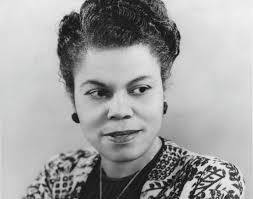

It’s Monday and we are still fighting against Coronavirus. Who knows how long this will be our new normal. I hope you all are staying safe and inside unless necessary. This week’s threads will highlight African-American nurses.
Estelle Massey Riddle Osborne (May 3, 1901—December 12, 1981) was an African American nurse and educator. She served in many prominent positions and worked to eliminate racial discrimination in the nursing field.
Estelle Massey was born in Palestine, Texas in 1901, the eighth of eleven children. Despite being uneducated and working in menial jobs, her parents, Hall and Bettye Estelle Massey sent all of their children to college.
Estelle received a teaching certificate from Prairie View State Normal and Industrial College (now Prairie View A&M University) but moved into nursing after she was nearly killed in a violent incident while teaching at a public school.[3] She joined the first nursing class of St. Louis City Hospital #2 (later Homer G. Phillips Hospital) and became a head nurse there after graduating in 1923.
In 1926 or 1927 she moved to Kansas City, Missouri, to teach at the Lincoln School of Nursing. She attended summer sessions at Teachers College, Columbia University, and eventually attended as a full-time student with the aid of a scholarship from the Rosenwald Fund. She received a bachelor’s degree in 1930, and a master’s in nursing education in 1931, becoming the first African American to do so.
She married Dr. Bedford N. Riddle in 1932. Estelle Massey Riddle became an educational director at Freedmen’s Hospital (now Howard University Hospital) in Washington, D.C. In 1934 she worked as a researcher for the Rosenwald Fund, then returned to Homer G. Phillips Hospital in St. Louis to become its first black director of nursing.
In 1943, she was appointed as a consultant to the National Nursing Council for War Service. In this role, she recruited student and graduate nurses and acted as a liaison to nursing schools, working to change discriminatory policies. By the end of World War II, 20 new nursing schools had begun admitting black students, the Cadet Nurse Corps had inducted 2,000 black members, and bans on black nurses had been rescinded by both the Army and Navy.
In 1945 she became the first African American instructor at New York University’s Department of Nursing Education. In 1954 she became Associate Professor of Nursing Education at the University of Maryland.
